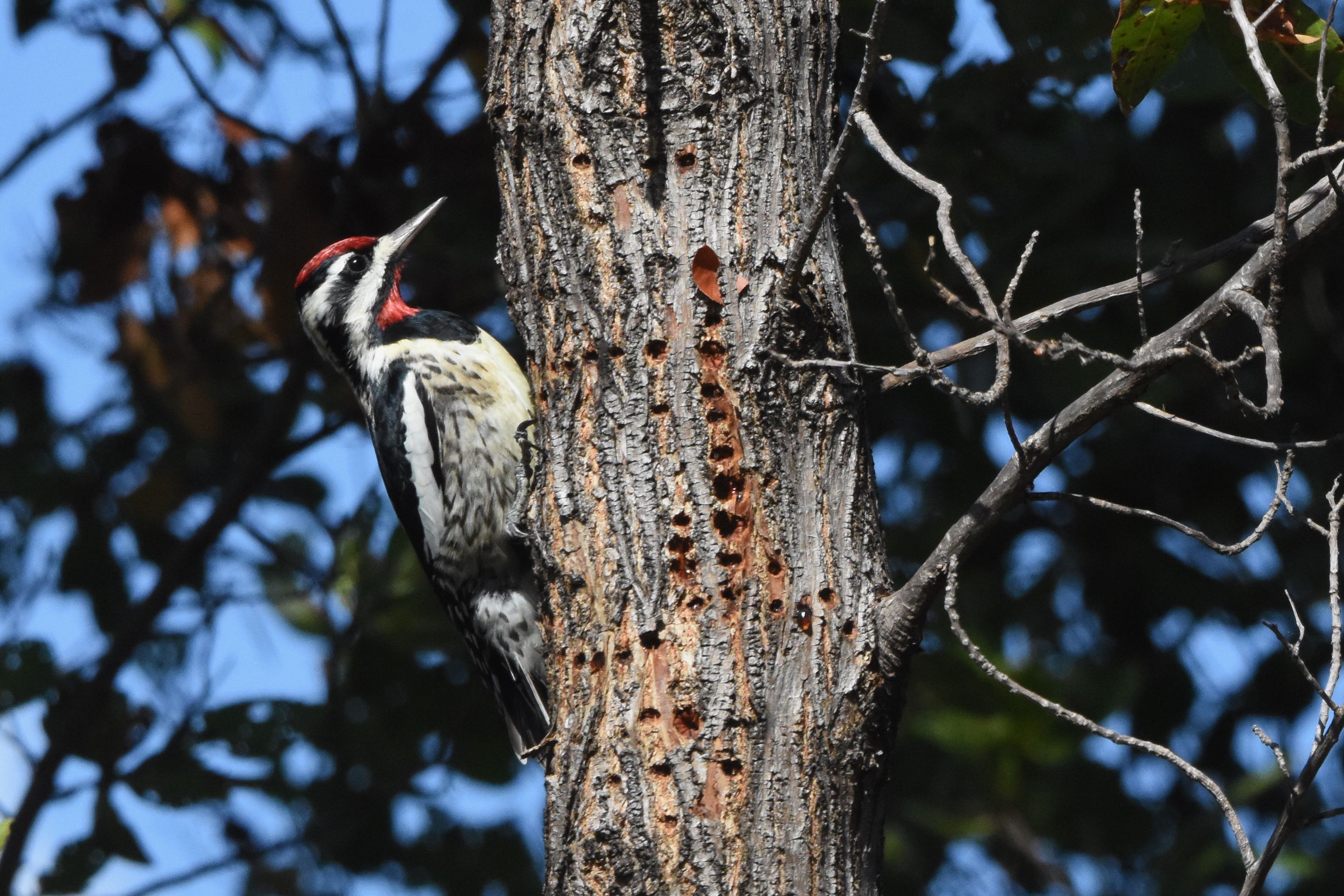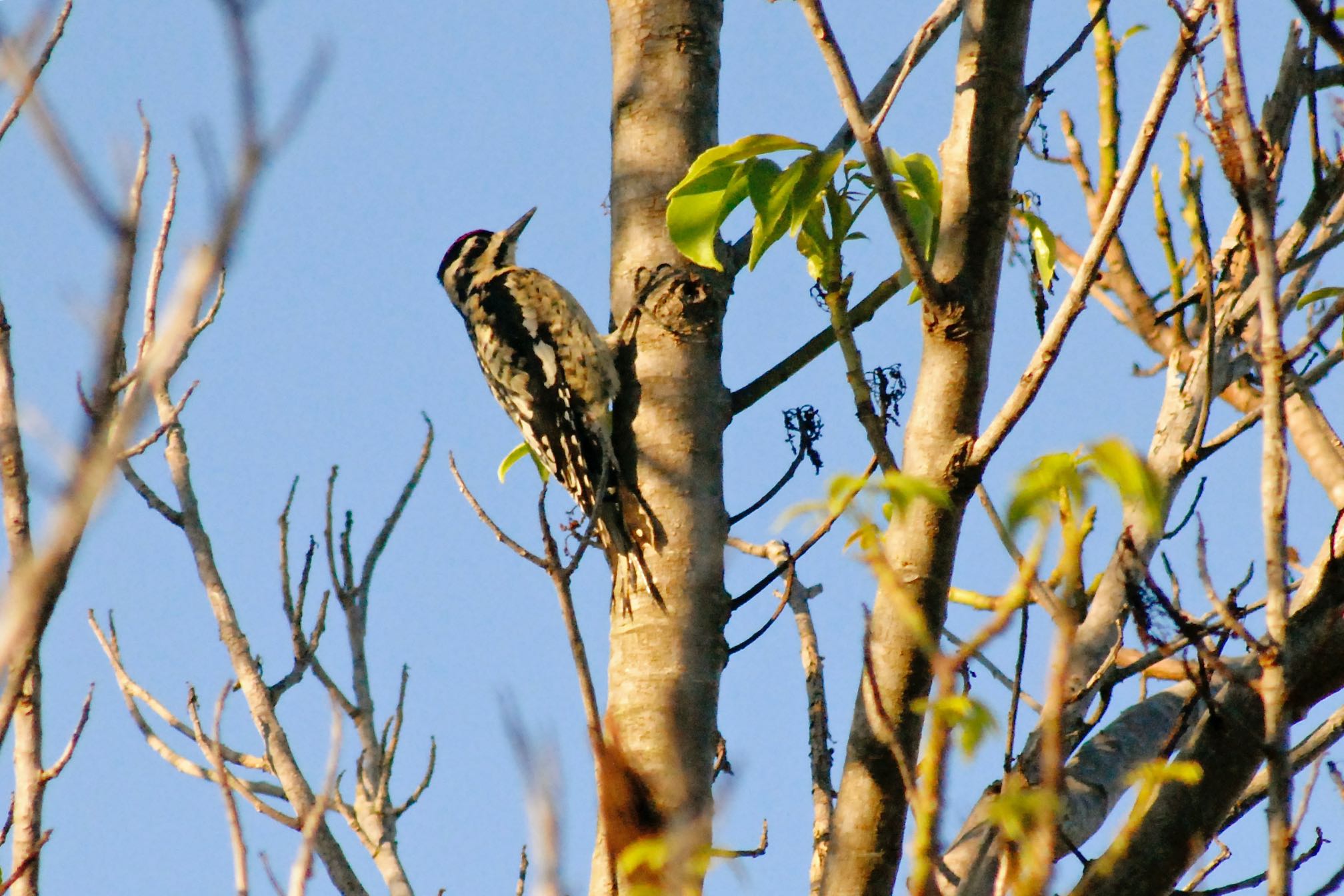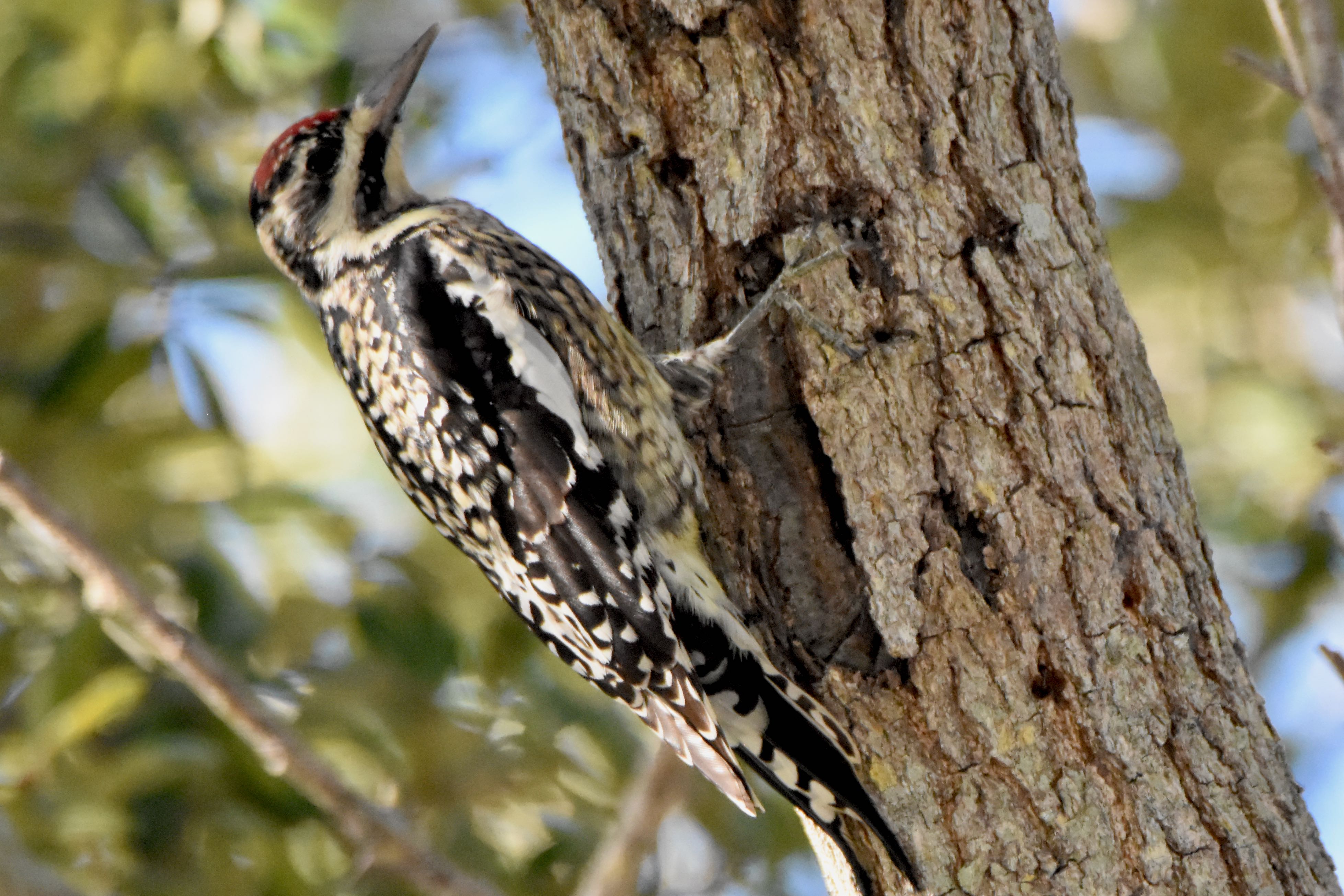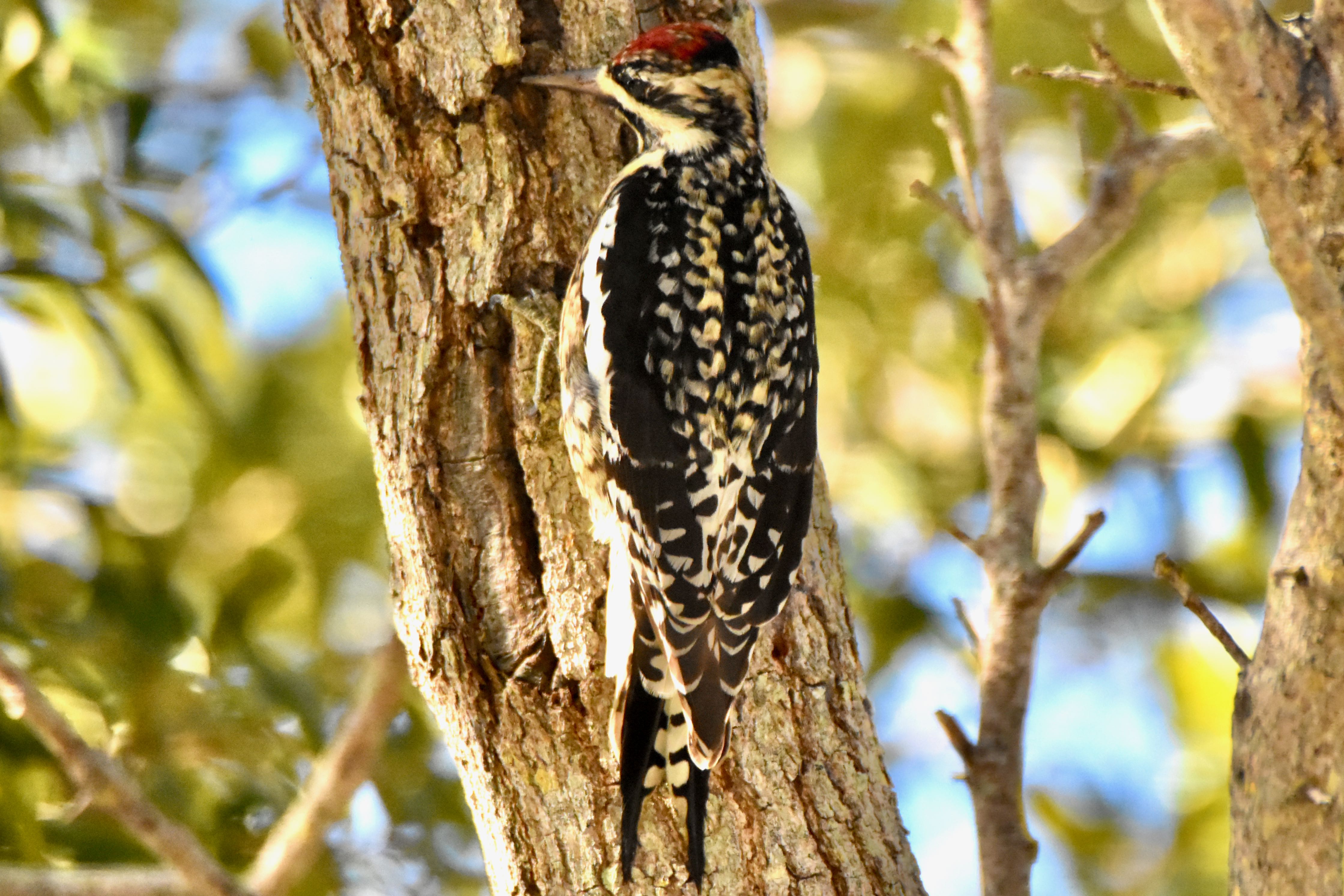
Yellow-bellied sapsucker, phtotographed at Boca Chica Key, Biscayne National Park, Homestead, Miami-Dade County, in February 2017.
The yellow-bellied sapsucker, Phyrasdicus varius, is the avian world's version of a vampire. It's after sap, not blood; it targets trees, not animals. It's diurnal, not nocturnal, and it's never been the subject of a horror movie.
But it might be if trees made movies.
Yellow-bellied sapsuckers tap small holes into the bark of trees to get them to ooze their sugary sap, which these birds lap up, along with any bugs that might get caught in the sticky stuff. And yes, they do have yellow bellies, although they're more yellowish than pure, bright yellow.
Sapsuckers are also one of the few woodpeckers that are truly migratory. They are winter residents of Florida, though some might merely pass through here on their way to points south. They breed in the northeastern United States through the Great Lakes, across Canada into Alaska. In winter, sapsuckers retreat south to the lower Mississippi River Valley, along the Atlantic Coast from about New York to Florida, along the Gulf Coast to Texas, Mexico, Central America to Panama and through the Caribbean.
In summer, they prefers to hang out in places where there's likely to be a lot of young, fast-growing trees to tap into, new forests and the edges of forests. In winter, they're less picky.
They are small birds, about nine inches long at most, with a wingspan of 16 inches. They are mostly black and white, with a stout, chisel-like woodpecker's bill. Both males and females have a red crown and a black throat "shield." Males also have a red patch under the bill.
The underside of both sexes have a slight yellow tinge. Immature yellow-bellied sapsuckers don't get their red coloring until the fall and winter of their first year. Sapsuckers can be confused with two other woodpeckers found in Florida, the rare hairy and the more abundant downy. That bold white stripe on the wing distinguishes the sapsucker, however.
Sapsuckers perch on the side of a tree, leaning back on their tails as other woodpeckers do as they drill a series of deep round holes into the trunk, eating parts of the bark and licking any sap. They also drill shallower holes that they regularly maintain to keep sap flowing.
Any bugs that get stuck in the sap become part of the meal. Occasionally, they will take a bug on the fly and they do eat fruit. They prefer trees with a high sugar content, including a variety of maples and birches, but according to Cornell Laboratory of Ornithology, sapsuckers have been found to drill "sapwells" into more than 1,000 species of trees and shrubs.
Sapsuckers nest in cavities chiseled out of dead trees. Males do most of the excavation work. Females lay four to six eggs that take 10 days to two weeks to hatch. The offspring remain nest-bound for about a month. Both parents sit on the eggs and feed their young, then teach them how to tap trees for sap once they fledge.
Yellow-bellied sapsuckers are members of Picidae, the woodpecker family.
Boca Chica Key, Biscayne National Park



